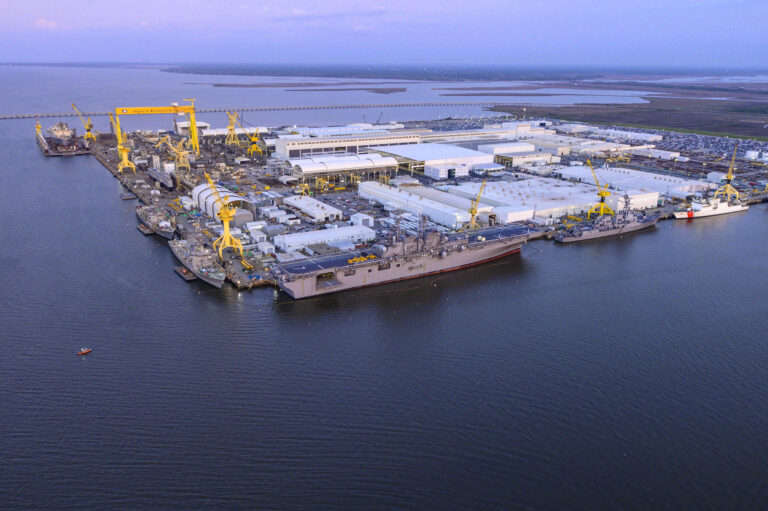
*****
ARLINGTON, Va. — HII’s Ingalls Shipyard is always looking for opportunities for more shipbuilding work and its yard has the capacity to take on more work, a senior company official said, including future awards of new classes of frigates and medium landing ships.
“We’re looking at all of our opportunities, said George Nungesser, Ingalls’ vice president for Program Management, speaking June 27 to reporters during the Modern Day Marine expo in Washington, noting that Ingalls is interested in being a second construction shipyard for the Constellation-class guided-missile frigates currently being built by Fincantieri’s Marinette Marine shipyard in Wisconsin. “We know surface combatants!”
The Ingalls shipyard builds Arleigh Burke-class guided-missile destroyers (DDGs), San Antonio-class amphibious platform dock ships, and America-class amphibious assault ships for the U.S. Navy and Legend-class national security cutters (NSCs) for the Coast Guard.
The company delivered the first Flight III Arleigh Burke-class DDG, the future USS Jack H. Lucas (DDG 125), June 27, and the 10th NSC, the future USCGC Calhoun (WMSL 759) began its first sea trials the same day.
Asked if Ingalls was interested in bidding on the Navy’s future medium landing ship (LSM) program, Nungesser said, “We’re always interested in future ship classes, future endeavors. With a legacy of over 85 years, we’re pretty agile. We will continue to monitor the program development of that particular program and look forward to working with the Navy to see where this goes, when it something comes out as an RfP [Request for Proposals].”
Nungesser said the Ingalls shipyard currently has excess capacity, noting that the company has invested more than $1 billion in Shipyard of the Future initiatives that were completed last year. He noted that hiring and retaining the work force is a more challenging aspect industry-wide, and that Ingalls has funded a number of initiatives with local educational institutions to attract young people toward the shipbuilding trades.
“We do not meet the needs of our customers without our work force, and we are pleas with the trends that we are seeing in terms of hiring, retention, and developing talent,” he said.
“What we need — including our defense industry base — is a strong, consistent demand signal from the government to keep this shipbuilding industry healthy and responsive,” he said. “A strong demand signal enables companies to plan for the future, to hire, to train, and retain a skilled work force, and also promote investment in new equipment, facilities, and technologies.






